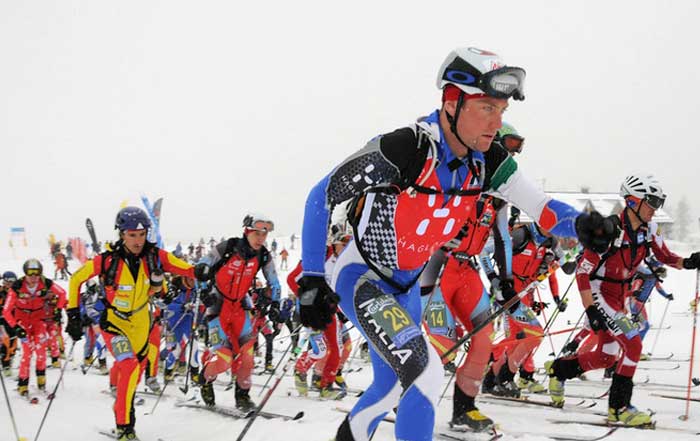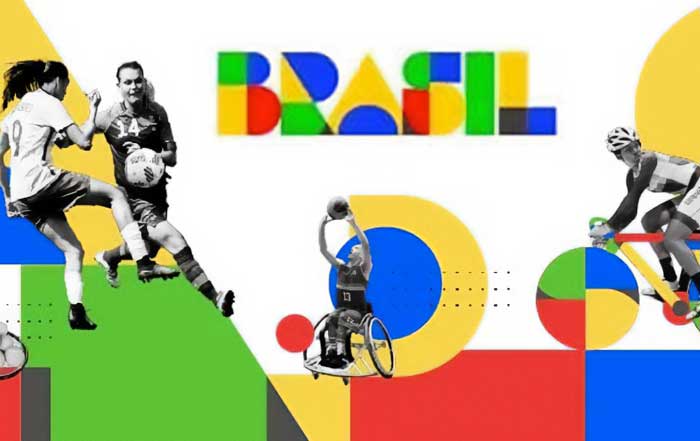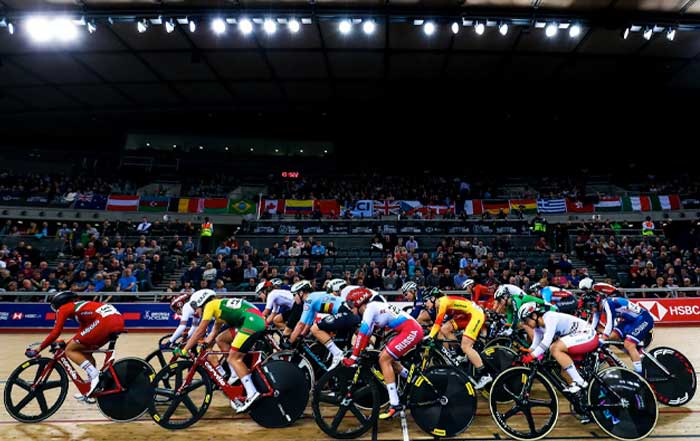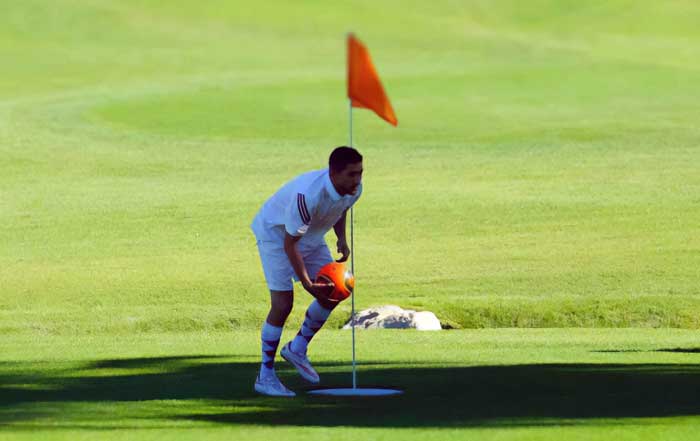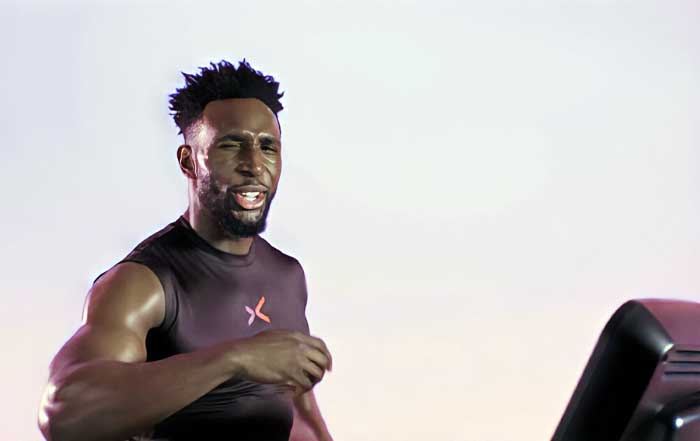The United Kingdom, with its storied history and deep-rooted traditions, has long been a bastion for some of the most revered sports across the globe. From the thunderous cheers echoing through the stands of Premier League football stadiums to the hushed intensity surrounding the green lawns of Wimbledon, sports are more than just games in the UK—they are a cultural cornerstone and a significant thread in the nation's social fabric. This profound connection between the British populace and their sports extends beyond mere spectatorship; it encompasses a sense of identity, community, and shared heritage.
In the contemporary era, however, the realm of sports has transcended its traditional boundaries, morphing into a multifaceted industry where the lines between athleticism and commerce are increasingly intertwined. Central to this evolution is the concept of branding—a powerful tool that shapes perceptions, drives engagement, and, critically, generates substantial revenue. The transformation of sports teams and events into globally recognized brands has redefined the business landscape, positioning branding as a pivotal driver of financial success within the UK's sports sector.
Today we'll look at the intricate relationship between branding and revenue generation in UK sports, exploring how effective branding strategies bolster income streams, enhance market presence, and contribute to the overall growth and sustainability of sports organizations. By examining specific case studies, analyzing current trends, and considering future prospects, we aim to shed light on the mechanisms through which branding propels the business of sports forward in the United Kingdom.
The Role of Branding in Sports
At its core, branding in sports encapsulates the essence of what a team or sporting organization represents—it is the embodiment of their history, values, ethos, and the emotional resonance they hold with their audience. Unlike traditional products or services, sports brands are imbued with a dynamic blend of passion, loyalty, and identity, which fans adopt as part of their own self-expression. This unique characteristic of sports branding necessitates a nuanced approach, where the focus extends beyond commercial considerations to include the cultivation of a deep and enduring connection with supporters.
Building a robust brand in sports involves a strategic amalgamation of visual identity, consistent messaging, community engagement, and performance on the field. The visual elements—such as logos, colors, and mascots—serve as immediate identifiers, but the brand's true strength lies in the narratives and values it conveys. Whether it's the underdog spirit, a legacy of excellence, or a commitment to innovation, these narratives shape the perception of the team and influence fan behavior.
In the competitive landscape of UK sports, where multiple teams vie for attention in densely populated markets, branding becomes a critical differentiator. A strong brand can elevate a team's profile, attract a broader fan base, and enhance its appeal to sponsors and partners. It also plays a vital role in fan retention, fostering a sense of belonging that persists through varying fortunes on the field.
Revenue Streams Influenced by Branding
The financial impact of branding manifests across several key revenue streams within the sports industry, each of which is significantly enhanced by the strength and reach of the brand.
Merchandise Sales
Merchandising is a direct reflection of brand loyalty, with fans purchasing products as a means of expressing their affiliation and support. The range of merchandise extends from traditional items like jerseys and scarves to a plethora of branded accessories, collectibles, and even lifestyle products. The success of merchandise sales is directly correlated with the brand's resonance; a compelling brand narrative can stimulate demand, encourage repeat purchases, and justify premium pricing.
In the UK, football clubs have capitalized on global fan bases to expand their merchandise offerings. Manchester United, for example, has established an extensive network of retail outlets and e-commerce platforms to cater to international markets. The club's iconic red jersey and the "Red Devils" brand are recognized worldwide, contributing significantly to the club's revenue. In the financial year ending 2020, Manchester United reported merchandise and licensing revenues of over £100 million, underscoring the substantial financial impact of a strong brand.
Sponsorships and Partnerships
Sponsorship deals are mutually beneficial arrangements where brands associate themselves with sports entities to leverage their popularity and reach. The value of these deals is heavily influenced by the sports brand's marketability, fan engagement levels, and media presence. A well-branded team offers sponsors a platform to reach dedicated audiences, enhance brand perception, and achieve marketing objectives.
The Premier League has seen some of the most lucrative sponsorship deals in sports history. The partnership between Manchester City and Etihad Airways, for instance, is reported to be worth over £67.5 million per year. This deal not only includes jersey sponsorship but also stadium naming rights, training facilities, and community initiatives. The comprehensive nature of such partnerships highlights how a strong brand can unlock multiple revenue avenues.
Broadcasting Rights
Broadcasting rights constitute a significant portion of revenue for sports organizations, with broadcasters willing to pay substantial sums for the rights to air games featuring popular teams. The attractiveness of these broadcasts is amplified by the presence of strong brands that guarantee higher viewership and, consequently, greater advertising revenue for broadcasters.
The Premier League's broadcasting deals are a testament to this dynamic. In 2018, the league secured domestic broadcasting rights worth £4.464 billion for the 2019-2022 cycle. International rights added a further £4.2 billion, bringing the total to over £8.7 billion. The global appeal of Premier League brands, such as Arsenal, Chelsea, and Tottenham Hotspur, plays a crucial role in achieving these figures.
Ticket Sales and Stadium Experience
The live event experience is a fundamental aspect of sports fandom, and a strong brand enhances the desirability of attending games. Fans are often willing to pay premium prices for tickets, especially for marquee matchups involving well-branded teams. Moreover, branding influences the stadium atmosphere, with elements like stadium design, in-game entertainment, and hospitality services contributing to a memorable experience.
Clubs like Tottenham Hotspur have invested heavily in state-of-the-art stadiums that reflect their brand values and cater to diverse fan preferences. The Tottenham Hotspur Stadium, opened in 2019, is a multi-purpose venue featuring modern amenities, innovative design, and a capacity of over 62,000. The branding of the stadium extends to every aspect of the fan experience, from premium seating areas to interactive fan zones, enhancing revenue through ticket sales, concessions, and event hosting.
Case Studies
Analyzing specific instances within the UK sports scene provides valuable insights into how branding strategies have been effectively employed to drive revenue.
Manchester United: A Global Brand
Manchester United's transformation into a global brand is a prime example of strategic branding in sports. The club's success in the 1990s and early 2000s, under the management of Sir Alex Ferguson, laid the foundation for a brand associated with excellence, resilience, and global appeal. The club capitalized on this success by expanding its commercial operations, focusing on international markets, and building a robust digital presence.
Key to Manchester United's branding strategy has been the cultivation of iconic players, such as David Beckham and Cristiano Ronaldo, whose personal brands complemented and amplified the club's own. The synergy between the club's brand and its star players has attracted a vast global fan base, estimated at over 650 million supporters worldwide.
The financial implications of this branding are significant. The club's revenue streams are diversified across commercial, broadcasting, and matchday income. In the 2019/2020 season, despite the challenges posed by the COVID-19 pandemic, Manchester United reported total revenues of £509 million, demonstrating the resilience and strength of its brand.
Leicester City: Branding the Underdog Story
Leicester City's remarkable Premier League triumph in the 2015/2016 season captured the imagination of sports fans globally. Branded as the quintessential underdog story, Leicester City's victory against 5,000-1 odds elevated the club's profile dramatically. The club leveraged this success to enhance its brand, emphasizing themes of perseverance, teamwork, and community spirit.
Post-championship, Leicester City expanded its international outreach, increased merchandise offerings, and secured new sponsorship deals. The club's ability to translate a singular sporting achievement into long-term brand value underscores the importance of narrative in sports branding.
Women's Football: Building a Brand for Equality
The rise of women's football in the UK presents an opportunity to build brands around themes of empowerment, diversity, and equality. Clubs like Arsenal Women and Chelsea FC Women have invested in developing their brands, aligning with social movements and appealing to new demographics.
The branding efforts extend to marketing campaigns, community programs, and collaborations with sponsors who share similar values. The increased visibility and professionalism in women's football have attracted broadcasting deals and sponsorships, contributing to the growth of the sport and its commercial viability.
The Influence of Star Athletes on Branding
Star athletes serve as powerful brand ambassadors, their personal brands intertwining with those of their teams to create compelling narratives that resonate with fans and the broader public.
Cristiano Ronaldo and Manchester United
Cristiano Ronaldo's return to Manchester United in 2021 is a notable example of a star athlete's impact on branding and revenue. Ronaldo's global fame and substantial social media following significantly boosted the club's brand visibility. Following the announcement of his return, Manchester United experienced a surge in merchandise sales, with Ronaldo's jersey breaking records for the fastest-selling jersey in Premier League history.
The heightened media attention and fan engagement associated with Ronaldo's presence also enhance the club's attractiveness to sponsors and broadcasters. The synergy between his personal brand and the club's brand creates opportunities for collaborative marketing campaigns and global outreach initiatives.
Emma Raducanu and British Tennis
Emma Raducanu's meteoric rise following her victory at the 2021 US Open has revitalized interest in British tennis. Her youthful exuberance, multicultural background, and remarkable talent have positioned her as a new face of the sport. Raducanu's personal brand appeals to a diverse audience, and her endorsements with major brands reflect her marketability.
Her success has positive implications for the broader branding of tennis in the UK, potentially attracting new fans, increasing participation rates, and stimulating investment in the sport. The Lawn Tennis Association can leverage her success to promote programs, secure sponsorships, and enhance the sport's profile nationally and internationally.
The Digital Era and Branding
Digital platforms have revolutionized the way sports brands engage with fans, offering unprecedented opportunities for interaction, personalization, and monetization.
Social Media Engagement
Teams utilize social media to share behind-the-scenes content, engage in real-time communication, and foster a sense of community among fans. Platforms like Pinterest, Youtube, Threads, Facebook, Instagram, and TikTok allow for creative storytelling and direct interaction, strengthening brand loyalty.
For example, Liverpool FC has harnessed social media to engage with its global fan base, providing multilingual content and region-specific campaigns. Their innovative use of digital media has garnered millions of followers, enhancing brand visibility and opening up new revenue opportunities through targeted advertising and sponsorships.
Streaming and On-Demand Content
The shift towards streaming services has impacted broadcasting rights and content distribution. Clubs and leagues are exploring direct-to-consumer models, offering subscription-based access to exclusive content, live matches, and personalized experiences.
Manchester City launched the "City+" subscription service, providing fans with access to live matches of youth and women's teams, documentaries, and classic games. This platform allows the club to collect data, understand fan preferences, and offer tailored content, deepening engagement and generating additional revenue.
E-Sports and Gaming Partnerships
The convergence of sports and gaming has led to collaborations between traditional sports brands and e-sports organizations. Teams are investing in e-sports divisions, hosting virtual events, and partnering with gaming companies.
West Ham United, for instance, has an official e-sports player representing the club in FIFA tournaments. These initiatives expand the club's reach to younger audiences, diversify branding efforts, and tap into the burgeoning e-sports market.
Challenges and Considerations
While branding presents numerous opportunities, sports organizations must navigate several challenges to maximize its benefits.
Protecting Brand Integrity
Maintaining brand integrity is crucial, especially in the face of controversies or negative publicity. Issues such as player misconduct, organizational scandals, or poor performance can damage the brand's reputation.
Clubs need to implement robust crisis management strategies, uphold ethical standards, and ensure transparency to mitigate risks. Proactive communication and community engagement can help maintain trust and loyalty among fans.
Navigating the Digital Landscape
The digital environment is dynamic, with trends and platforms evolving rapidly. Sports brands must stay agile, adopting new technologies and platforms to remain relevant.
However, this requires investment in digital infrastructure, expertise in data analytics, and a willingness to experiment with innovative content formats. Balancing traditional branding methods with digital initiatives is essential to reach diverse audiences effectively.
Future Trends
Anticipating future developments enables sports organizations to adapt their branding strategies proactively.
Personalization and Fan-Centric Experiences
Advancements in technology allow for highly personalized fan experiences. Utilizing artificial intelligence and machine learning, clubs can offer tailored content, merchandise recommendations, and interactive platforms.
The use of mobile apps with augmented reality features can enhance the in-stadium experience, providing real-time statistics, interactive games, and exclusive content.
Corporate Social Responsibility (CSR)
Integrating CSR initiatives into branding strategies can enhance brand perception and fulfill societal expectations. Programs focused on community development, education, health, and social justice resonate with fans and can attract sponsors with similar values.
The Premier League's "No Room For Racism" campaign exemplifies how social issues can be incorporated into branding, promoting inclusivity and diversity within the sport.
Emerging Markets and International Expansion
Exploring emerging markets offers growth opportunities for UK sports brands. Strategic partnerships, localized content, and international tours can introduce brands to new audiences.
Clubs are establishing academies and training programs abroad, such as Manchester City's football schools in China and India, fostering talent development and brand presence in these regions.
Accelerated Digital Transformation
The pandemic accelerated the adoption of digital platforms as primary means of engagement. Teams enhanced their online presence through virtual events, interactive content, and enhanced social media campaigns. For instance, clubs hosted virtual watch parties, Q&A sessions with players, and behind-the-scenes content to keep fans connected.
The shift to digital also opened new revenue opportunities, such as virtual ticket sales, digital merchandise, and online sponsorships. Branding efforts focused on creating immersive and interactive experiences that could replicate, to some extent, the excitement of live events.
Community and Social Responsibility Initiatives
During the pandemic, sports organizations emphasized their roles as community pillars, engaging in initiatives to support public health efforts and assist those affected by the crisis. Branding campaigns highlighted themes of unity, resilience, and solidarity.
For example, Premier League clubs participated in the "Players Together" initiative, where players contributed to NHS charities. Such efforts enhanced the clubs' brand image, demonstrating a commitment to social responsibility and strengthening emotional connections with fans.
Financial Challenges and Adaptations
The loss of matchday revenue had significant financial implications, prompting clubs to explore cost-cutting measures and alternative income sources. Branding strategies shifted to focus on long-term fan loyalty and sustainable engagement rather than immediate revenue generation.
Sponsorship agreements were renegotiated, with some brands seeking reduced fees due to decreased exposure. Clubs had to demonstrate value through alternative means, leveraging digital metrics and innovative activations to maintain sponsor relationships.
The Role of Women’s Sports in Branding
The growing prominence of women's sports presents both opportunities and challenges for branding and revenue generation.
Increasing Visibility and Investment
Women's sports have gained increased media coverage and investment, with organizations recognizing the potential for growth. Branding efforts emphasize empowerment, diversity, and inclusivity, appealing to a broad audience.
The Football Association's "Gameplan for Growth" aimed to double participation and the fan base of women's football by 2020. Such initiatives have led to increased sponsorship deals and broadcasting agreements, contributing to revenue growth.
Challenges in Monetization
Despite progress, women's sports often face disparities in funding, media coverage, and commercial support compared to their male counterparts. Branding strategies must address these challenges by highlighting the unique value propositions and engaging untapped audiences.
Collaborations with brands committed to gender equality can enhance commercial opportunities. Additionally, leveraging digital platforms can bypass traditional media barriers, reaching fans directly and building dedicated communities.
The Influence of Government Policies and Economic Factors
Government policies and economic conditions significantly impact sports branding and revenue.
Brexit and International Relations
The UK's departure from the European Union introduced uncertainties regarding player transfers, sponsorships, and broadcasting rights. Branding strategies may need to adapt to changes in regulations affecting international operations.
Clubs might face challenges in attracting international talent due to work permit regulations, potentially affecting on-field performance and brand appeal. Conversely, there may be opportunities to strengthen domestic branding and focus on developing local talent.
Taxation and Financial Regulations
Changes in taxation policies and financial regulations can affect clubs' financial planning and investment in branding initiatives. Compliance with financial fair play regulations requires prudent management of revenues and expenditures.
Economic factors such as inflation, exchange rates, and consumer spending patterns also influence fans' purchasing power, affecting ticket sales and merchandise revenue.
Conclusion
The multifaceted nature of branding in UK sports underscores its critical role in navigating an increasingly complex and competitive environment. From leveraging digital innovations to adapting to global challenges like the pandemic, sports organizations must continuously evolve their branding strategies to sustain revenue growth and maintain relevance.
By embracing inclusivity, technological advancements, and community engagement, sports brands can foster deeper connections with fans, attract new audiences, and build resilient revenue models. The interplay between branding and business in sports is a dynamic process, reflecting broader societal trends and economic conditions.
As the UK sports industry looks to the future, the focus on strategic branding will remain paramount. Organizations that can balance tradition with innovation, uphold their values, and deliver authentic experiences will be best positioned to thrive in the ever-changing landscape of the business of sports.
In essence, branding serves as the linchpin that connects the passion of the sport with the business acumen required to thrive. By harnessing the power of branding, UK sports organizations can ensure that the fervor of the fans translates into sustainable growth and prosperity for years to come.

